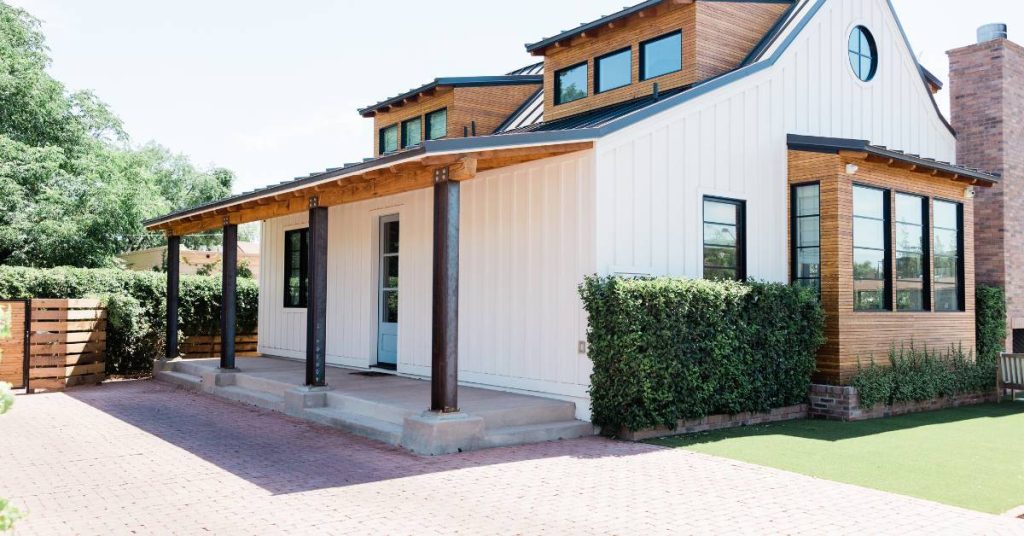USDA loans come with occupancy requirements that are non-negotiable.
If you intend to use the home as your primary residence, you shouldn’t have a problem…however, there are individual scenarios that you may find yourself in that can put a question mark on your eligibility.
In this article, we break down the occupancy requirements for you so you’ll know what steps to take after your loan application closes.
What are USDA Home Loan Occupancy Requirements?
With USDA loans, buying or constructing homes has become more accessible for people with low income. To be granted this loan, however, you need to be eligible for them.
Occupancy requirements are stipulations you must meet to successfully apply for a USDA loan. These requirements point out who can use USDA-financed homes and how they can be used.
The primary residency requirement is the most important stipulation under this. This says that you need to use the home as your primary place of living, which means you can’t use the home as a vacation home or as an income-earning property.
On top of this, you must also meet the following requirements:
- You must move into the home within 60 days of closing the loan.
- You need to ensure the home meets the minimum property standards.
- You need to make sure the home is in a USDA-eligible area.
Scenarios Allowed Under the USDA Loan Occupancy Requirement
Under the USDA’s occupancy rule, there are several living scenarios allowed when applying for a loan.
These include:
- Buying a new home
USDA loan applicants planning to buy a home that’s already constructed should follow the general occupancy rules indicated under the requirements. This means they should move into the house within 60 days of loan closing and use it as their primary living place.
- Constructing a new home
USDA borrowers can use the loans to construct a new home. This must be completed within 12 months, and borrowers should provide documentation during the financing.
This scenario will call for 2 loan closings:
- Financing home construction in the interim
- Permanent home financing
However, note that not all lenders provide this type of loan.
- Applicants who already own another home
Under occupancy requirements, a borrower can use the USDA loan to buy a second property. There are considerations to make for this scenario, including the following:
- The applicant plans to use the USDA-financed home as a primary residence.
- The current property isn’t USDA-financed.
- The applicant is financially qualified to have more than one home.
- The existing property no longer meets your needs.
- The applicant has relocated due to their employment arrangements.
- Applicants who are on active military duty
USDA applicants on active military duty are given a bit of leeway when it comes to the occupancy requirements.
They still need to occupy the property within 60 days and intend to use it as their primary dwelling place. However, if they can’t due to being deployed, their immediate family can fulfill this instead.
- Student applicants
Students can obtain a USDA-funded property if they have a reasonable chance of finding work in the region after graduation. They must also intend to live in the house permanently after graduating. Lenders’ policies and guidelines may differ, however.
Can I Have a Roommate with a USDA Loan?

It is possible to have a roommate with a USDA Loan. There are multiple scenarios involved when considering having a roommate. These include:
- Currently having a roommate who will move into the USDA-financed home with you
- Currently having a roommate who will not move with you into the USDA-financed home
- Currently have no roommate but will have one moving in with you after acquiring a USDA-financed home
- Currently having no roommate but considering having one after the loan is closed
No rules are set on who can live with you under the USDA’s occupancy requirement. But the bigger consideration you need to make for having a roommate is the household income requirement.
The USDA considers everyone living in a home as a primary residence as a household member. This includes your roommate. The following people, however, are not considered to be part of a household:
- Live-in aides
- Foster kids
- Foster adults
USDA home loans have a maximum income limit of 115% of the area’s median income. Under this rule, your household income should be no more than 15% above the area’s median income.
Your roommate’s income becomes part of the household income after moving into your home. As such, it may push your household income beyond the maximum limit set by the USDA.
Can You Use USDA Loan for Investment Property?
The USDA loan program was established to provide an affordable and accessible route to homeownership for low- and middle-income earners. As such, the loans they have are intended for acquiring primary residences. Because of this rule, borrowers can’t use a USDA loan to purchase investment properties.
The USDA’s Primary Residency Rule
Like FHA loans, USDA loans also have a primary residency rule in place. After all, USDA loans are primarily meant for personal use.
Under this requirement, you must show proof that you will live in the home more than 50% of the time. This means the applicant must show intent to use the financed home as their primary place of living.
The primary residency rule also applies when you’re trying to refinance your home. You need proof that you’re using the home as your primary dwelling.
It’s possible to meet this requirement while owning another property. Although, your application might attract more scrutiny because of this. Therefore, you will need enough proof that you plan on primarily living in the USDA-financed home for a successful application.
New USDA Mortgage Guidelines
Apart from the Occupancy Requirements, to be considered for a USDA loan, you also need to meet the following requirements:
- Must meet the household income requirement
- Be a citizen or non-citizen national of the United States, or a qualified alien
To check for eligibility, you can visit USDA’s Income and Property Eligibility website.
Do You Meet the Occupancy Requirement for a USDA Loan?
Owning a home is no longer out of reach.
The USDA provides the means and accessibility for low- to mid-income earners to own their own homes. The best part is that it offers 100% financing with affordable mortgage payments. No zero down-payments, too.
But to qualify for the USDA’s financing program, you must meet all the requirements. The occupancy requirement is one of them and is non-negotiable. However, if you do intend to make the house your primary place of living, there shouldn’t be any problem.
If you have more questions and want to know more about occupancy requirements, do not hesitate to contact us. We’ll be glad to assist you.
Frequently Asked Questions
What qualifies as a primary residence, according to the IRS?
The easy answer to this is the home you spend most of your time in. Generally, it’s the place where you live for over 50% of the year.
If you have multiple homes that you spend time in, the IRS also considers the following factors:
- Place of employment
- Where you bank
- The place where your family lives
- Areas where you’re a part of a club or organization.
Can I rent out my primary residence?
You can, but not right off the bat for USDA-financed homes. If you’re getting a house via USDA loans, you must move in within 60 days of loan closing. After that, you need to have that home as your primary residence for 12 months before you can rent it out.
Can you have a non-occupying co-borrower on a USDA loan?
No, the USDA doesn’t allow an applicant to have non-occupant co-borrowers. It only allows occupants to be a part of the mortgage.
If you’re looking to have a non-occupant co-borrower in your application, you may need to go for a conventional or an FHA mortgage instead.






